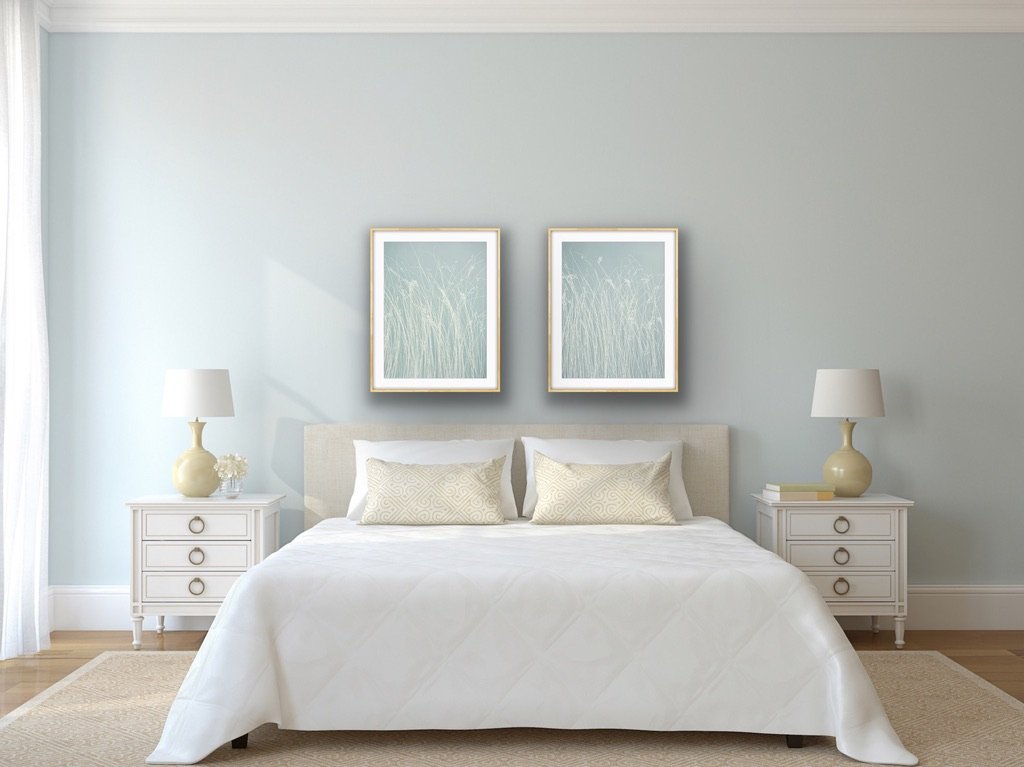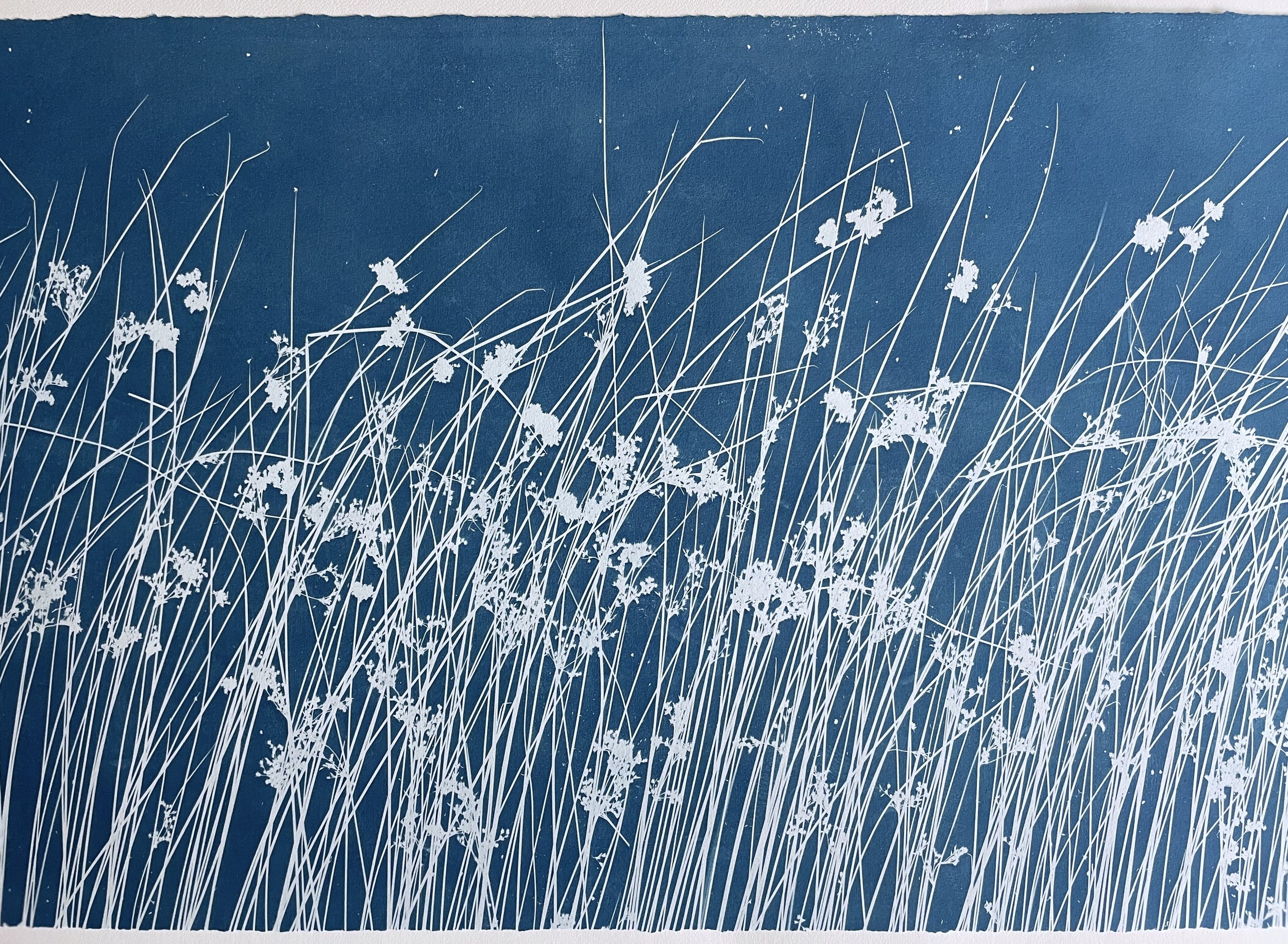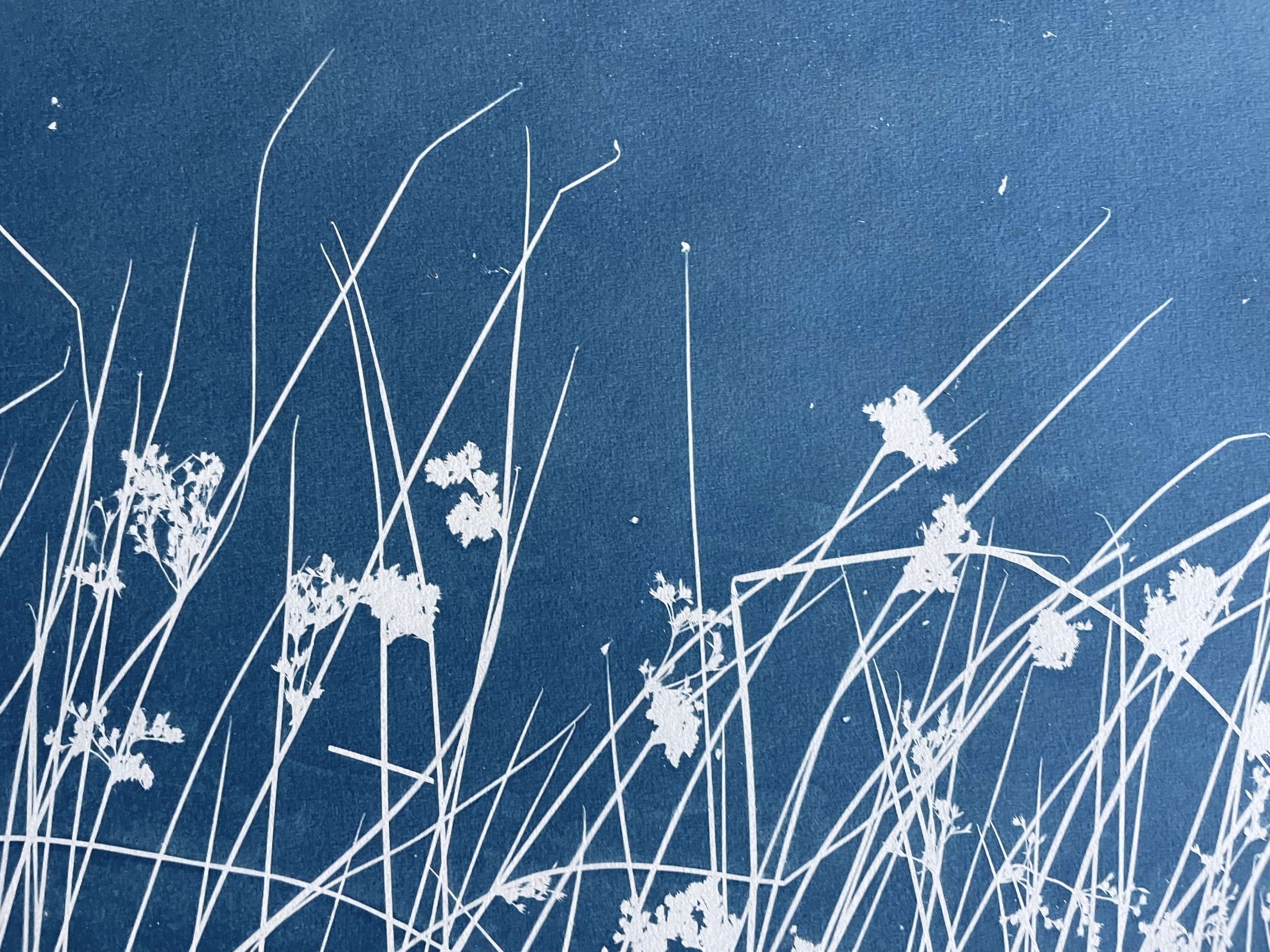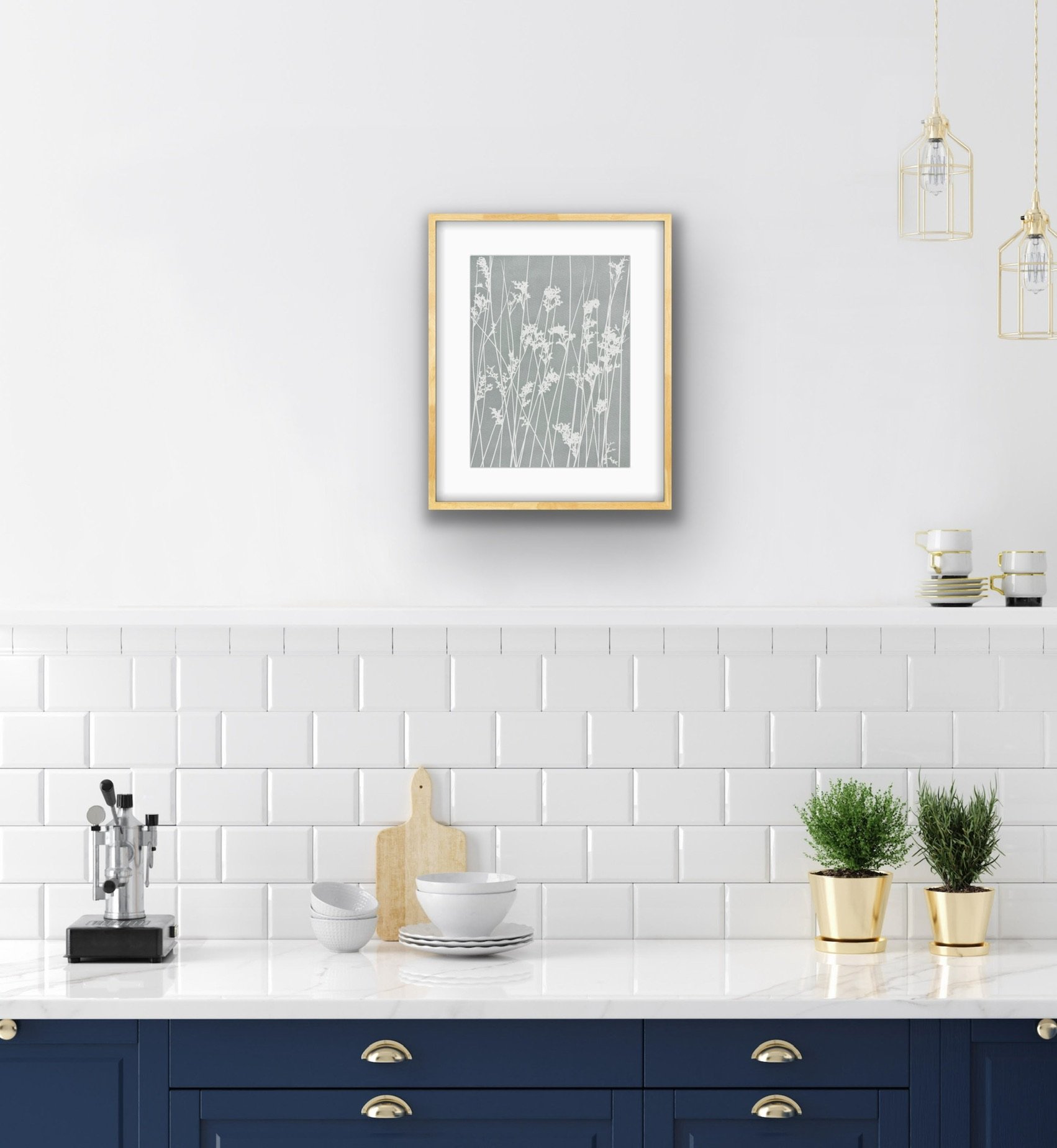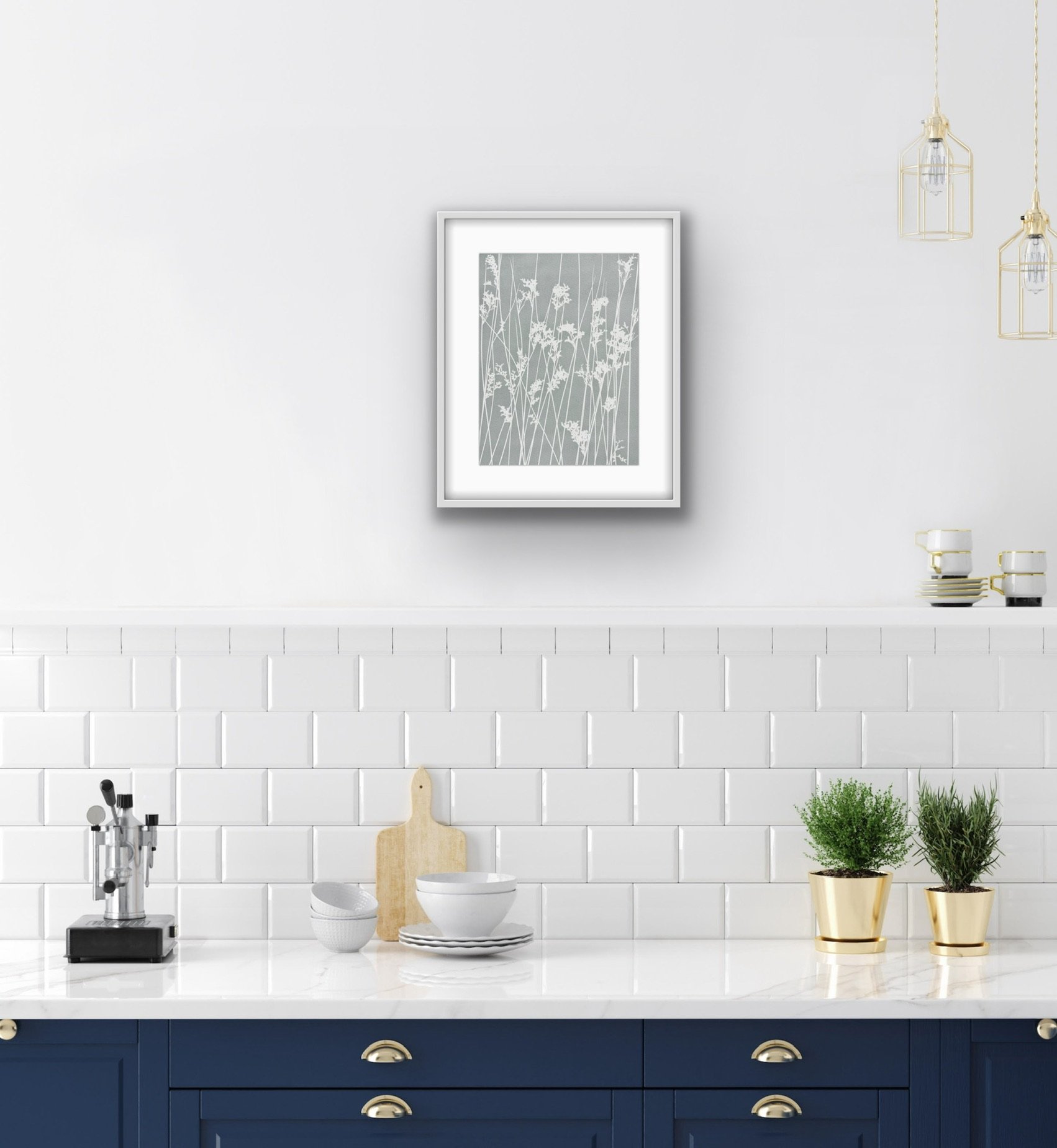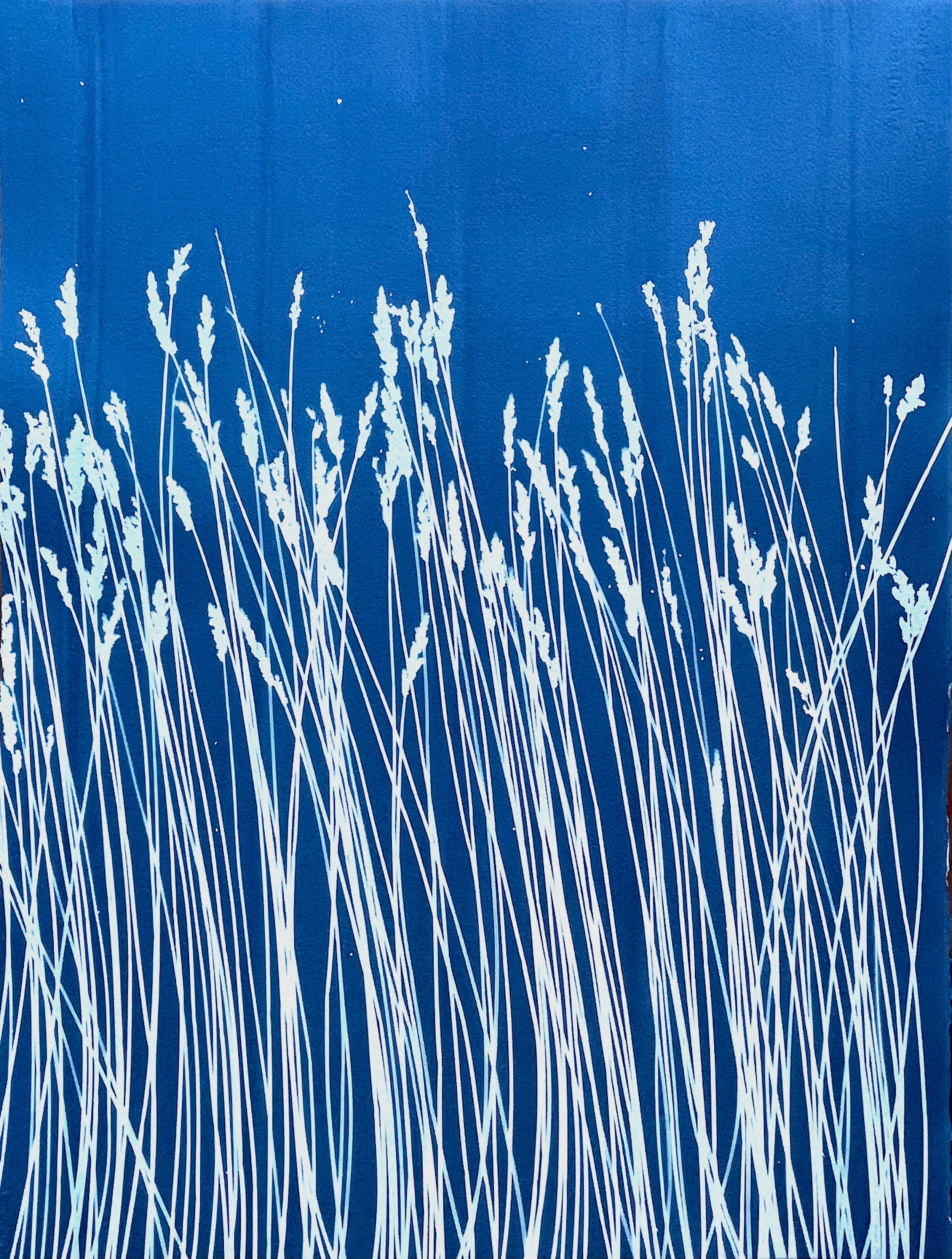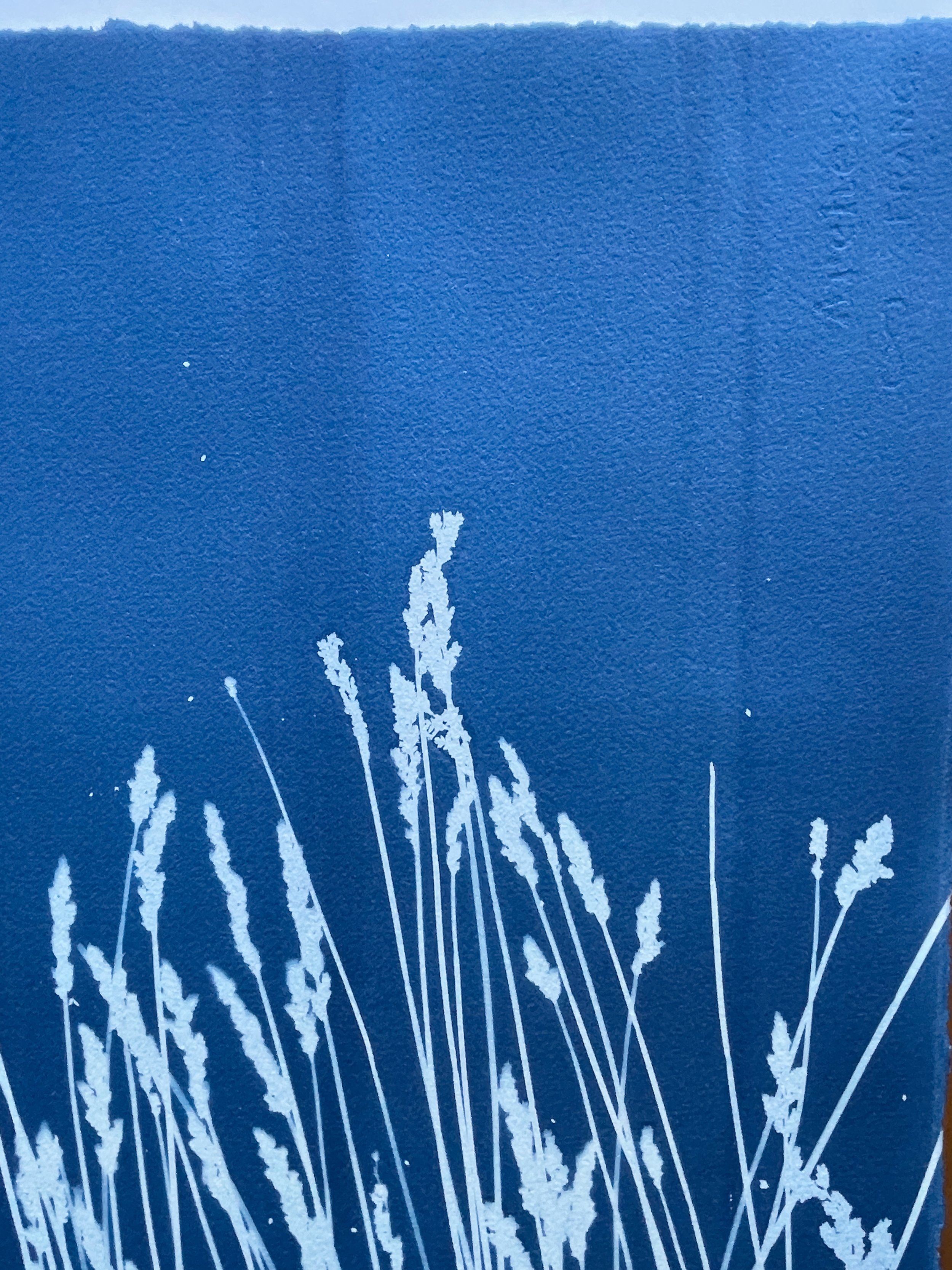Cloudy Day Marsh Grass Diptych (PAIR of 18 x 24 inch original monotypes on paper)
These are TWO separate 18 x 24 inch monotypes.
Unframed.
Each is unique, impossible to replicate. They ship together in the same box.
*Note: It is impossible to buy this pair and the Cloudy Day Marsh Grass 1 & 2 prints I listed individually as they are the same two artworks. Save money and save the artist time packing by buying both together here as a diptych.
Although this looks like a screen print or woodcut, it is actually a form of 19th-century photography. The normal color of a cyanotype (blueprint) is dark blue and white. However, this slate gray and cream cyanotype was made by dramatically altering the ratio of two photo chemicals in the mix before brushing it on the paper.
This monotype was made with fresh-cut Native Californian wild grass from my garden. The species of tall marsh grass is called Gray Rush or the latin name Juncus Patens. It is native to Northern California and grows in local wetlands. If not cut back, it it would grow over 4 feet tall.
Each blade of grass was laid in that position by me by hand. There was no camera nor photo negative. It is a precise and slow-going process composing a picture with hundreds of solid objects, pinning them under glass, and capturing their silhouette with sunlight on paper I had painted with photosensitive chemicals.
Every one of my botanical cyanotypes is an entirely unique monotype as the cut plants are laid in that one exact composition only once. There is no copper plate; there is no ink or printing press.
These are TWO separate 18 x 24 inch monotypes.
Unframed.
Each is unique, impossible to replicate. They ship together in the same box.
*Note: It is impossible to buy this pair and the Cloudy Day Marsh Grass 1 & 2 prints I listed individually as they are the same two artworks. Save money and save the artist time packing by buying both together here as a diptych.
Although this looks like a screen print or woodcut, it is actually a form of 19th-century photography. The normal color of a cyanotype (blueprint) is dark blue and white. However, this slate gray and cream cyanotype was made by dramatically altering the ratio of two photo chemicals in the mix before brushing it on the paper.
This monotype was made with fresh-cut Native Californian wild grass from my garden. The species of tall marsh grass is called Gray Rush or the latin name Juncus Patens. It is native to Northern California and grows in local wetlands. If not cut back, it it would grow over 4 feet tall.
Each blade of grass was laid in that position by me by hand. There was no camera nor photo negative. It is a precise and slow-going process composing a picture with hundreds of solid objects, pinning them under glass, and capturing their silhouette with sunlight on paper I had painted with photosensitive chemicals.
Every one of my botanical cyanotypes is an entirely unique monotype as the cut plants are laid in that one exact composition only once. There is no copper plate; there is no ink or printing press.
These are TWO separate 18 x 24 inch monotypes.
Unframed.
Each is unique, impossible to replicate. They ship together in the same box.
*Note: It is impossible to buy this pair and the Cloudy Day Marsh Grass 1 & 2 prints I listed individually as they are the same two artworks. Save money and save the artist time packing by buying both together here as a diptych.
Although this looks like a screen print or woodcut, it is actually a form of 19th-century photography. The normal color of a cyanotype (blueprint) is dark blue and white. However, this slate gray and cream cyanotype was made by dramatically altering the ratio of two photo chemicals in the mix before brushing it on the paper.
This monotype was made with fresh-cut Native Californian wild grass from my garden. The species of tall marsh grass is called Gray Rush or the latin name Juncus Patens. It is native to Northern California and grows in local wetlands. If not cut back, it it would grow over 4 feet tall.
Each blade of grass was laid in that position by me by hand. There was no camera nor photo negative. It is a precise and slow-going process composing a picture with hundreds of solid objects, pinning them under glass, and capturing their silhouette with sunlight on paper I had painted with photosensitive chemicals.
Every one of my botanical cyanotypes is an entirely unique monotype as the cut plants are laid in that one exact composition only once. There is no copper plate; there is no ink or printing press.



